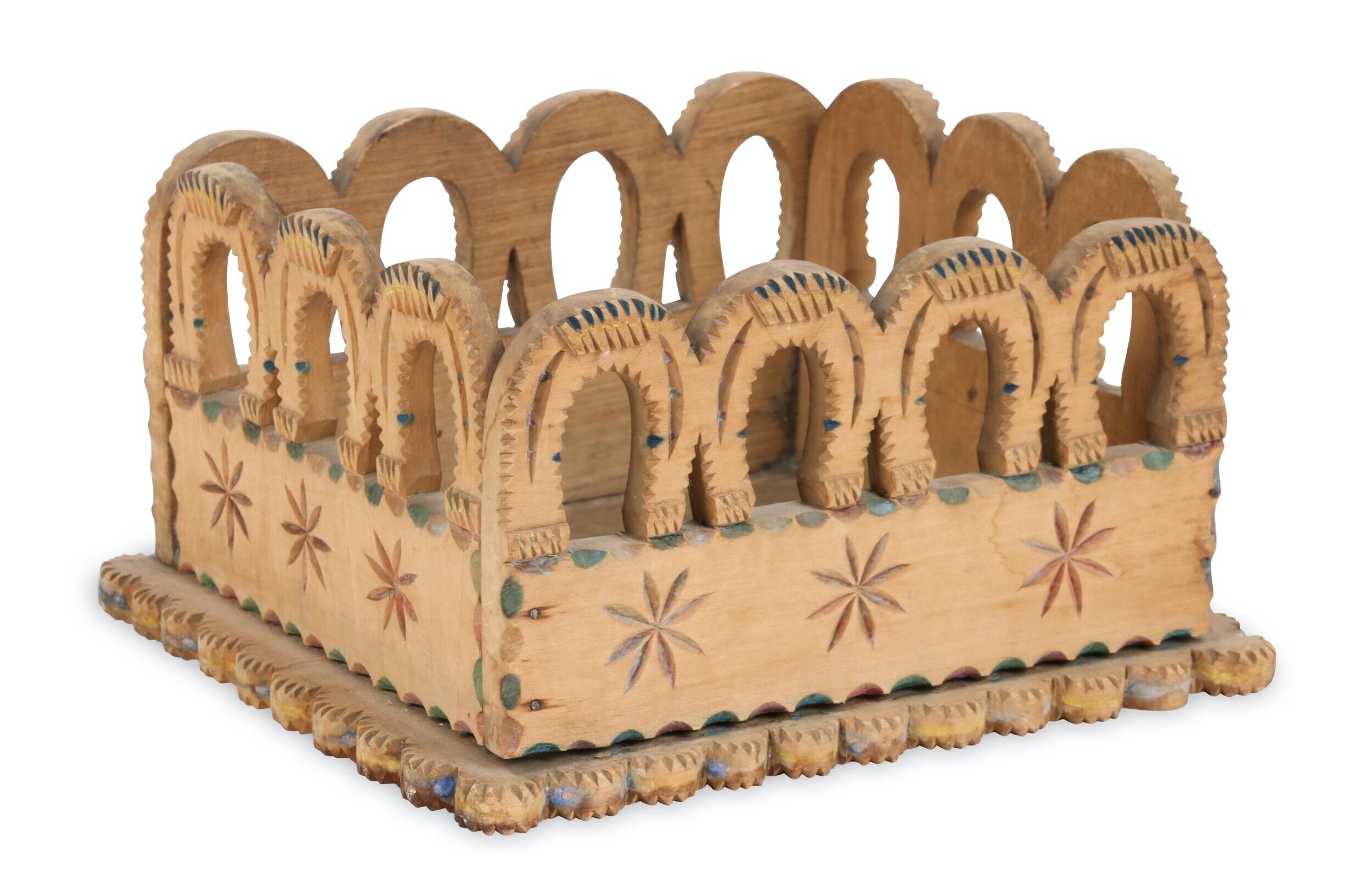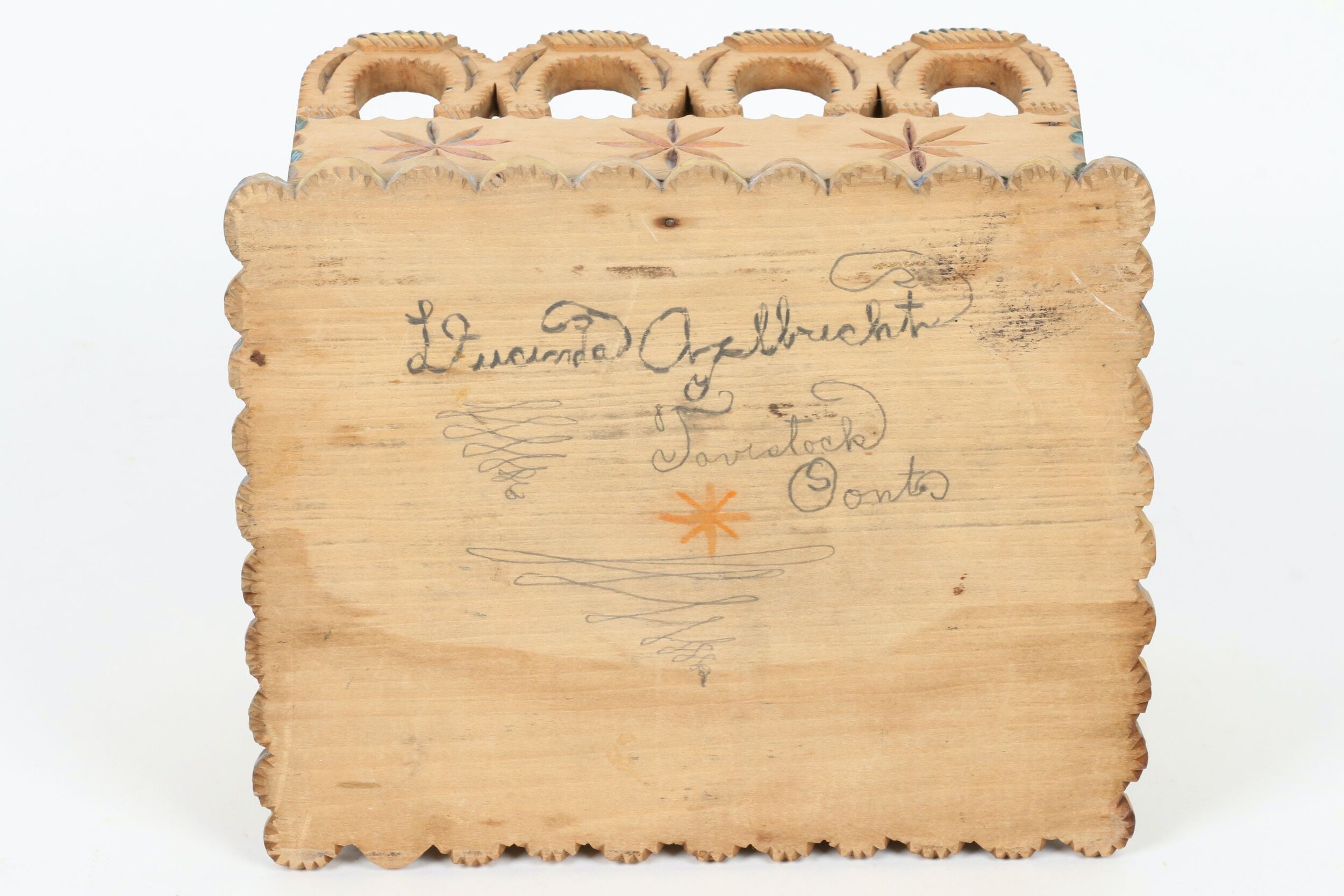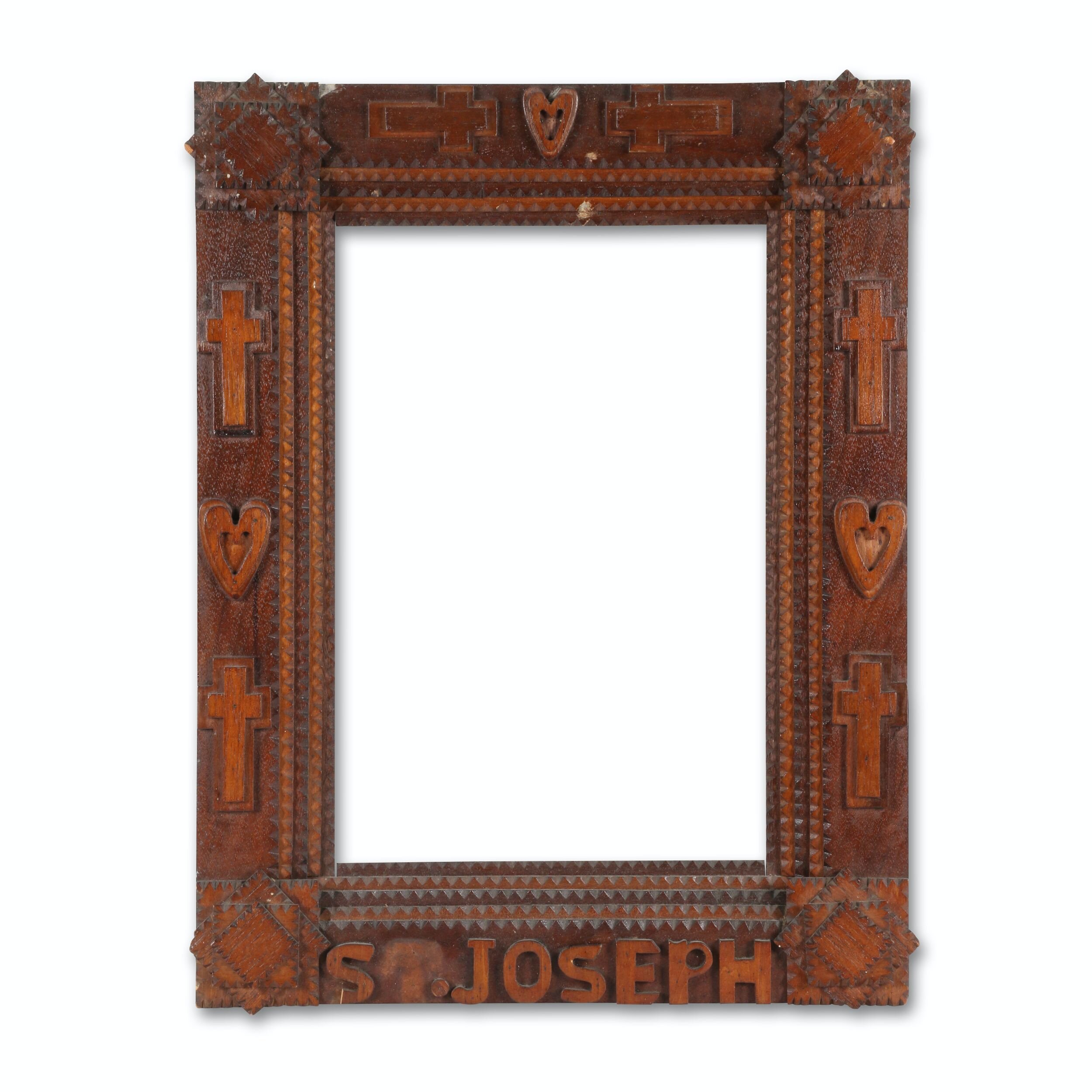The mysterious Fred Hoffman and his sewing box
The story of a respected Canadian artist whose works remain steadfast in the fickle art market.
Miller & Miller Auctions has justly earned its reputation as a “treasure trove” of quality in antiques and high-value collectibles. Its February 8 sale of Canadiana, Pottery and Folk Art has discerning collectors counting the days for the sound of the auction gavel. It features the collection of the late Don Pero: a quiet but passionate collector who had an appetite for all things Canadiana.
One of the Pero’s offerings is a seldom seen example of Canadian “Tramp Art,” signed by an obscure woodcarver by the name of Fred Hoffman.
A carved basswood sewing box, about 9 inches tall, features the artist’s favoured chip-carved horseshoes surrounding the upper edges. Each of four panels is incised with pinwheels and all motifs are stippled with dabs of green and red paint. Carved in the early years of the 20th century, it is expected to fetch upwards of $1200.
A background look at the Tramp Art style and of Fred Hoffman’s life sheds light on this greatly-anticipated Miller & Miller presentation.
A chip-carved ‘Tramp art’ box by Fred Hoffman is up for auction at Miller & Miller’s February 8th Canadiana sale. It is expected to fetch upwards of $1200.
Born in Scotland, in 1845, Frederick G. (sometimes Fritz) Hoffman grew up in the Mennonite and Amish communities of Pennsylvania. It is thought that during this time he picked up his distinctive style of “Tramp Art” carving. Hoffman’s signature and “Philadelphia” lend credence to this theory.
No ancient craft, the term “Tramp art” was first coined by Francis Lichten in a 1959 article of the journal Pennsylvania Folklife. Helaine Fendelman’s 1975 book Tramp Art. An Itinerant’s Folk Art sheds more light on the tradition. Thought American, born in the mid-years of the 19th century, Tramp Art was defined as a decorative art form using as its base “found” wooden materials—often cast-off cigar boxes and shipping crates.
It is the showy decorations over the base which draws the applause for historic Tramp Art. Geometric wooden shapes—squares, triangles and rectangles were carved, then layered to create a three-dimensional effect. Pinwheels, 8-pointed stars, and compass points were favored motifs. Other examples saw hearts, leaves or horseshoes applied. Bits of china, glass or mirrors finished the surface.
Given the historical connection between Mennonite and Amish settlers in Pennsylvania and the Waterloo Region, the migration north of the “Tramp Art” genre is clear. But Tramp artist Fred Hoffman’s journey from the rolling hills of Pennsylvania to Waterloo County is less apparent.
Some stories suggest that Fred fled to Canada to escape from gambling debts; others reference a prison break. A few indicate merely his need to start afresh.
In any case, Waterloo and Oxford County Mennonite and Amish oral history, circa 1900 finds Fred Hoffman leading an itinerant lifestyle in the area. With no home base, he gravitates between a number of Mennonite and Amish host families in the St. Jacobs area of Woolwich Township and those around Tavistock/Punkydoodle’s Corners.
Trading odd jobs for food and a bed for the night—cutting wood and fishing seem to rank high in Hoffman’s favoured activities-- it appears that this guest also offered more permanent recompense to his hosts for their hospitality.
Leisure time found him, whittling knife in hand, creating highly decorated and intricate wooden household decorations: wall shelves (brackets), boxes and baskets, even wooden chains. Children of the house might find wooden pliers by their beds, like a magical visit from the tooth fairy.
The late art educator Teri Kobayashi conducted personal interviews with the descendants of families who sheltered Hoffman. They shed light on his days. She notes that several examples of Hoffman’s “ball-in-cage” carvings have also been found. “By cutting away the wood around the centre and leaving an outer frame, the result is a cage with a ball moving freely inside,” explains Kobayashi.
An example of a "ball-in-cage" carved cane, offered in Miller & Miller's February 8th Canadiana Auction. By cutting away the wood around the centre and leaving an outer frame, the result is a cage with a ball moving freely inside.
Legend tells of him smoking a hand-carved pipe, three feet long, with a bowl six to eight inches high. Assistance lighting the monster was apparently required!
Like other artists before and since, Hoffman’s life ended with his worst nightmare. Falling seriously ill the spring of 1926, his condition deteriorated to the point where he was forced to enter the House of Refuge in Kitchener. An institution for indigents, it was often the last shelter for drifters.
Fred Hoffman’s death didn’t see the end of his influence.
A school of Mennonite and Amish woodcarvers, no doubt some taught the craft by the master himself continued in the “Tramp Art” tradition. It is believed that esteemed St. Jacobs woodcarver David B Horst (1873-1965) may have learned the craft at the elbow of this most intriguing of “tramps.”
Auction Details: Canadiana, Pottery & Folk Art, February 8th, 2020. 9 am.
Live Auction Location: 59 Webster St. New Hamburg, Ontario. N3A 1W8
Did you enjoy this article? Feel free to share it using the links below:









